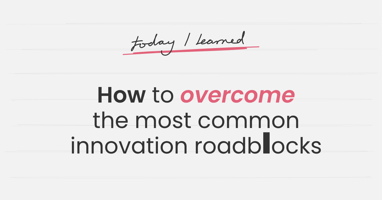Editor's note: This is the first post in a two-part series.
For those companies operating in mature markets, the challenge of rapid growth comes down to a numbers game. When my core markets are growing at 1% to 3% per year, how do I grow at a higher rate that attracts outstanding employees and satisfies my shareholders? For years this dilemma has been documented and studied. From books like Gina O'Conner's Grabbing Lightning to numerous articles in PDMA Visions Magazine, authors and NPD professionals have chased the goal of breakthrough innovation in order to drive rapid financial growth.
In recent years, a new organizational concept has shown how breakthrough innovation can be achieved. These organizations go by different names in different companies. For this article I will refer to them as Business Innovation Groups (BIG). The hallmark characteristics of these BIGs are:
- The immersion of commercially oriented professionals into a traditional research organization;
- A defined strategic area within which to operate;
- A mission to envision, develop and launch entirely new product lines or businesses outside the company's core yet within the strategic area.
What do I mean by “commercially oriented professionals”? These are individuals who have backgrounds in business development, product management or strategic marketing. They welcome the opportunity to become “intrapreneurs” and work closely with the research team to create entirely new business.
Why the need for a defined strategic area? Without some boundaries the organization can lapse into chasing everything and delivering nothing. Does this mean that promising ideas that are outside the strategic area are thrown away? No, they are passed onto the tech transfer team to evaluate the opportunity for licensing or joint venturing.
The final fundamental characteristic of these BIGs is the empowerment to take significant, breakaway ideas all the way to the market. In many cases, this can require the creation of new sales channels, market brands or both. Typically the BIG is entering a new, higher growth market or radically disrupting a mature market and the core sales and marketing methods won't fit. Bringing a bold concept from idea to launch is a major challenge that tests the commercial leaders within the BIG.
How well are these BIGs operating? What are some of the challenges building these hybrid organizations? Do they all have the three characteristics defined above? What does success look like and how is it measured? We'll dive into these topics in the next blog. Stay tuned for my next post.





